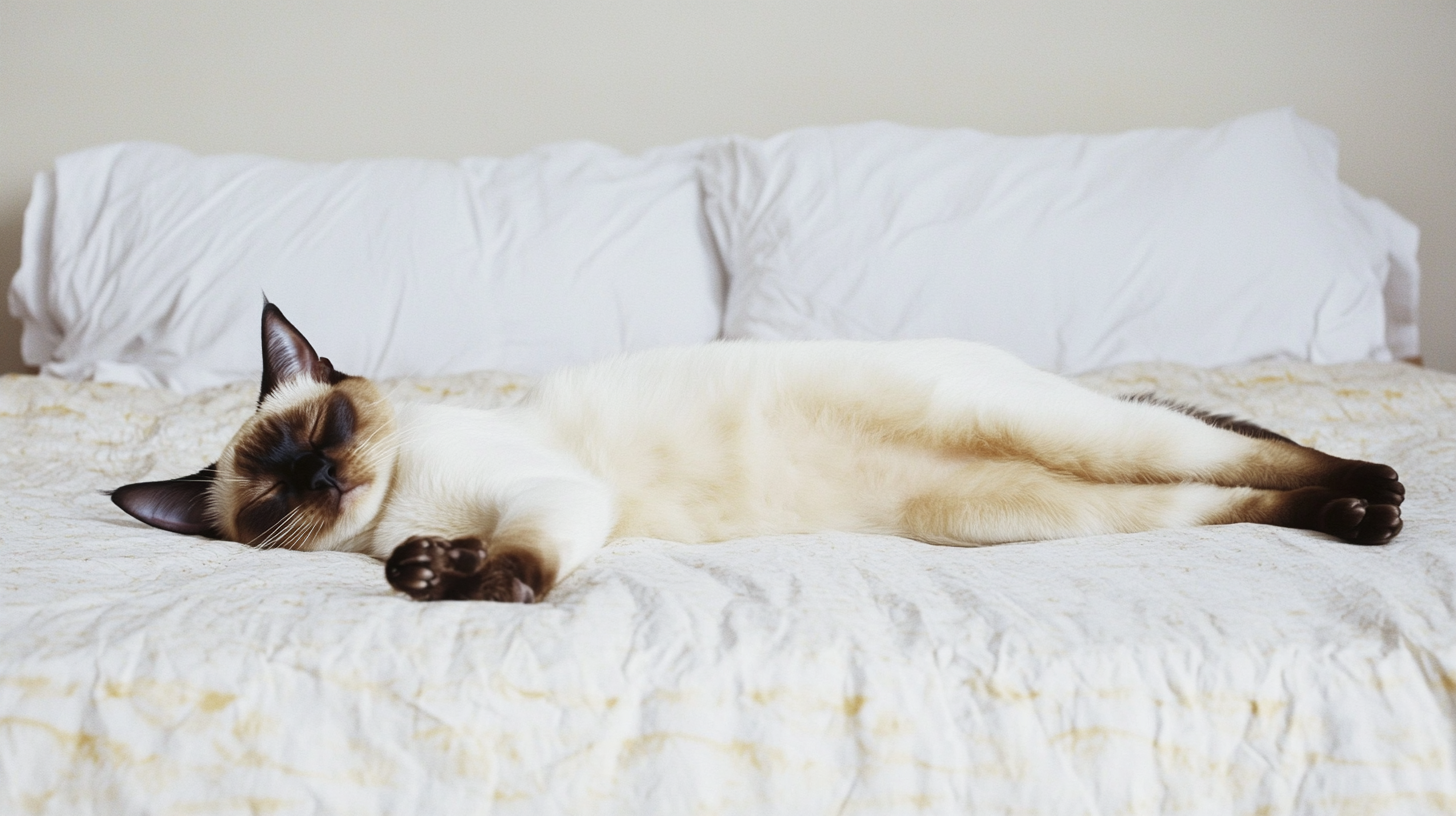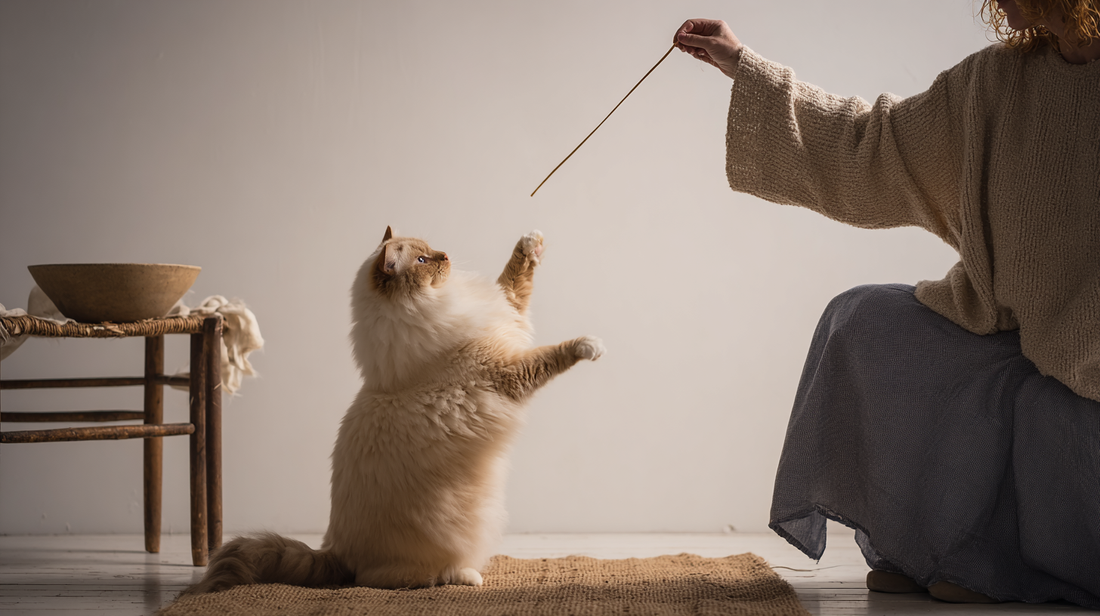Many cats show subtle signs of discomfort that owners often mistake for normal aging. Slow movements when jumping or decreased interest in play could actually indicate your feline friend is suffering from osteoarthritis (OA), a degenerative joint disease.
Many pet owners don't realize just how common OA is in cats, especially as they age. This blog post aims to shed light on the causes of osteoarthritis in cats, how to recognize the often subtle signs, and what solutions are available to help your beloved companion live a more comfortable life.
Summary
What is feline osteoarthritis?
Understanding the condition
Osteoarthritis, often referred to as degenerative joint disease (DJD), is a progressive condition that affects the joints. In simple terms, OA occurs when the cartilage that cushions the ends of bones within a joint gradually breaks down. This cartilage degradation leads to increased friction between the bones, causing pain, inflammation, and reduced mobility.
The disease doesn't just affect the cartilage; it also involves changes in the underlying bone and inflammation of the joint lining. Because OA is progressive, the symptoms tend to worsen over time.
Types of osteoarthritis in cats
Osteoarthritis in cats can be classified into two main types: primary and secondary.
Primary (idiopathic) OA occurs when the exact cause of joint degeneration is unknown. This is often related to the natural aging process and gradual wear and tear on the joints.
Secondary OA, on the other hand, develops as a result of an identifiable underlying cause. This can include:
Trauma: such as a joint injury or fracture.
Developmental Issues: like hip dysplasia, where the joint doesn't form properly.
Other Joint Diseases: such as medial patellar luxation.
Most commonly affected joints
While osteoarthritis can affect any joint in your cat's body, it is more commonly found in certain areas. These include the elbow, hip, knee, and tarsus (ankle) joints. One study reported that the hip is the most frequently affected joint, followed by the knee.
Although studies specifically focusing on the feline knee joint are scarce, it's an important area to consider, especially given the increasing recognition of OA in cats.

Risk factors for feline osteoarthritis
Age-related changes
Genetic predispositions
Genetic predispositions can play a role in the development of OA. Certain breeds are more prone to joint problems that can lead to OA.
Hip Dysplasia: for example, Maine Coon cats are known to be predisposed to hip dysplasia, a condition where the hip joint doesn't form properly, leading to increased risk of OA.
Scottish Fold Osteochondrodysplasia: Scottish Fold cats are predisposed to osteochondrodysplasia which is associated with the gene variant TRPV4.
Weight and body condition
While the direct link between obesity and OA in cats isn't as definitively proven as it is in dogs and humans, excess weight can certainly exacerbate the condition. Extra pounds put additional stress on your cat's joints, accelerating cartilage breakdown and increasing inflammation.The proinflammatory effects of fat tissue can also exacerbate OA in cats. Adipose tissue is now recognized as an active secretory and endocrine gland. It releases cytokines like TNF-alpha, IL-1, and IL-6, which are associated with cartilage degeneration. Adipose tissue also secretes fat-specific hormones like leptin and adiponectin that can promote cartilage degeneration.
Previous injuries
Medical conditions that increase risk
Certain underlying health conditions can also increase the risk of OA in your cat. These include:
Acromegaly: a hormonal disorder.
Medial Patellar Luxation: a condition where the kneecap dislocates.
Mucopolysaccharidosis: a genetic metabolic disorder.

How to spot signs of osteoarthritis in your cat
One of the biggest challenges in diagnosing osteoarthritis in cats is that they are masters at masking pain. Unlike dogs, who often exhibit obvious lameness, cats tend to show more subtle behavioral and lifestyle changes that can be easily missed or attributed to normal aging.
Being vigilant and observant of your cat's daily habits is crucial for early detection.
Changes in behavior and daily activities
Reduced activity levels: a general decrease in playfulness or exploration in your previously active cat.
Decreased jumping: hesitation or reluctance to jump onto furniture, window sills, or other elevated spots they used to access easily.
Changes in grooming habits: matted fur, especially on the back or hindquarters, due to difficulty reaching certain areas.
Reluctance to move or apathy: your cat may seem less interested in interacting with family members or other pets.
Changes in temperament: increased irritability, hissing, or aggression when touched or handled, especially around affected joints.
Altered sleeping habits: your cat might sleep more than usual or choose different sleeping locations that are easier to access.

Physical indicators of joint pain
Joint pain upon palpation: your cat may react negatively when you touch or gently press on their joints.
Joint swelling or deformities: you might notice swelling or changes in the shape of your cat's joints, although this can be subtle.
Lameness (less common in cats than in dogs): your cat might limp or favor one leg over another, though this is not always apparent in cats with OA. One study noted lameness in 20-54% of cats with knee joint OA.
Veterinary diagnosis of feline osteoarthritis
If you suspect your cat might have osteoarthritis, it's essential to consult with your veterinarian for a proper diagnosis. A veterinarian is needed to properly diagnose OA and rule out other issues.
What happens during the examination
Your vet will start by asking for a detailed medical history, including any past injuries, illnesses, and observed behavioral changes. They will then perform a thorough physical examination, paying close attention to your cat's posture, gait, and range of motion.
Palpation of joints: The vet will gently palpate (feel) your cat's joints to check for pain, swelling, crepitus (a crackling sound), or reduced range of motion.
Imaging and additional testing
Radiographs (X-rays) are a common tool used to diagnose OA. X-rays can reveal changes in the joints, such as the presence of osteophytes (bone spurs), narrowing of the joint space, or increased bone density.
It is important to remember that radiographic signs do not always correlate with the severity of clinical signs. Your cat may have significant OA on X-rays but show only mild symptoms, or vice versa.
Other tests: In some cases, your vet may recommend additional tests to rule out other conditions that could be causing similar symptoms.
Treatment options for cats with osteoarthritis
While there is no cure for osteoarthritis, there are many effective strategies to manage the condition and improve your cat's quality of life.
Managing your cat's weight
If your cat is overweight, achieving and maintaining a healthy weight is crucial for managing OA. Even if your cat is not overweight, weight management should still be recommended.
Reducing excess weight decreases the stress on your cat's joints, alleviating pain and improving mobility.
Creating a joint-friendly home environment
Making simple changes to your home environment can make a big difference in your cat's comfort and accessibility. This includes:
Providing ramps or steps to favorite spots
Providing soft, comfortable bedding in warm, draft-free areas.
Ensuring easy access to food, water, and litter boxes, preferably on the same level as their resting areas.
Joint support supplements
Certain dietary supplements can help support joint health and reduce inflammation in your cat.
Omega-3 fatty acids: found in fish oil, these have anti-inflammatory properties that can help reduce your cat's joint pain and stiffness.
Specialized joint health diets
Some veterinary diets are specifically formulated to support joint health in cats with OA. These diets are often high in:
EPA and DHA: specific types of omega-3 fatty acids known for their anti-inflammatory effects.
Green-lipped mussel extract: a natural source of omega-3 fatty acids, glucosamine, and chondroitin.
Pain management and medications
In many cases, medication is necessary to manage the pain associated with your cat's OA.
Non-steroidal anti-inflammatory drugs (NSAIDs), such as meloxicam or robenacoxib, are commonly prescribed to reduce pain and inflammation in cats with OA.
Caution: It's crucial to discuss potential side effects with your veterinarian, especially since NSAIDs can have adverse effects on your cat's kidneys, particularly in older cats. Regular monitoring of kidney function is essential.
Other pain medications: In some cases, your vet may recommend other pain medications such as gabapentin or tramadol, especially if neuropathic pain is suspected.
Monoclonal antibody therapy: Frunevetmab, a feline monoclonal antibody therapy, can provide significant improvement in chronic pain management in cats with OA.

Physical therapy approaches
Living well with osteoarthritis: Long-term management
Osteoarthritis (OA) is a common and often subtle condition in cats, but with early detection and proper management, a comfortable life is possible. Proactive monitoring for behavioral changes is crucial; these may include reduced activity, reluctance to jump, decreased grooming, or changes in litter box habits.
Use questionnaires to track changes and provide insights to your veterinarian.
Maintain a healthy weight using a Body Condition Score (BCS).
Consider therapeutic diets with omega-3 fatty acids, green-lipped mussel, and glucosamine.
Discuss pain management options like NSAIDs or other medications with your vet.
Modify the environment to reduce stress and improve accessibility.
With open communication with your veterinarian and attentive care, you can help your cat navigate OA and enjoy a full life.
The information in this article is based on the following scientific publications:
Bennett, D., Ariffin, S.M.b.Z. and Johnston, P. (2012) Osteoarthritis in the cat 1. How common is it and how easy to recognise? Journal of Feline Medicine and Surgery, 14(1), pp. 65–75.
Bonecka, J., Skibniewski, M., Zep, P. and Domino, M. (2023) Knee Joint Osteoarthritis in Overweight Cats: The Clinical and Radiographic Findings. Animals, 13(15), 2427.
Corbee, R.J. (2012) The effect of dietary long chain omega 3 fatty acid supplementation on owner s perception of behaviour and locomotion in cats with naturally occurring osteoarthritis. Journal of Animal Physiology and Animal Nutrition, 97(4), pp.660–668.
Lascelles, B.D.X., DePuy, V., Thomson, A., Hansen, B., Marcellin-Little, D.J., Biourge, V. and Bauer, J.E. (2010) Evaluation of a Therapeutic Diet for Fel ine Degenerative Joint Disease. Journal of Veterinary Internal Medicine, 24(3), pp. 487–495.
Velie, B.D., Milden, T., Miller, H. and Haase, B. (2023) An estimation of osteochondrodysplasia prevalence in Australian Scottish Fold cats: a retrospective study using VetCompass Data. BMC Veterinary Research, 19, 252.
Looking for a solution? Start here
Stylla Mobility for cats
Supports mobility and active lifestyle
- Helps maintain healthy joints and mobility
- Supports cartilage and connective tissue function
- Encourages an active lifestyle
Made in Switzerland with strict quality standards





